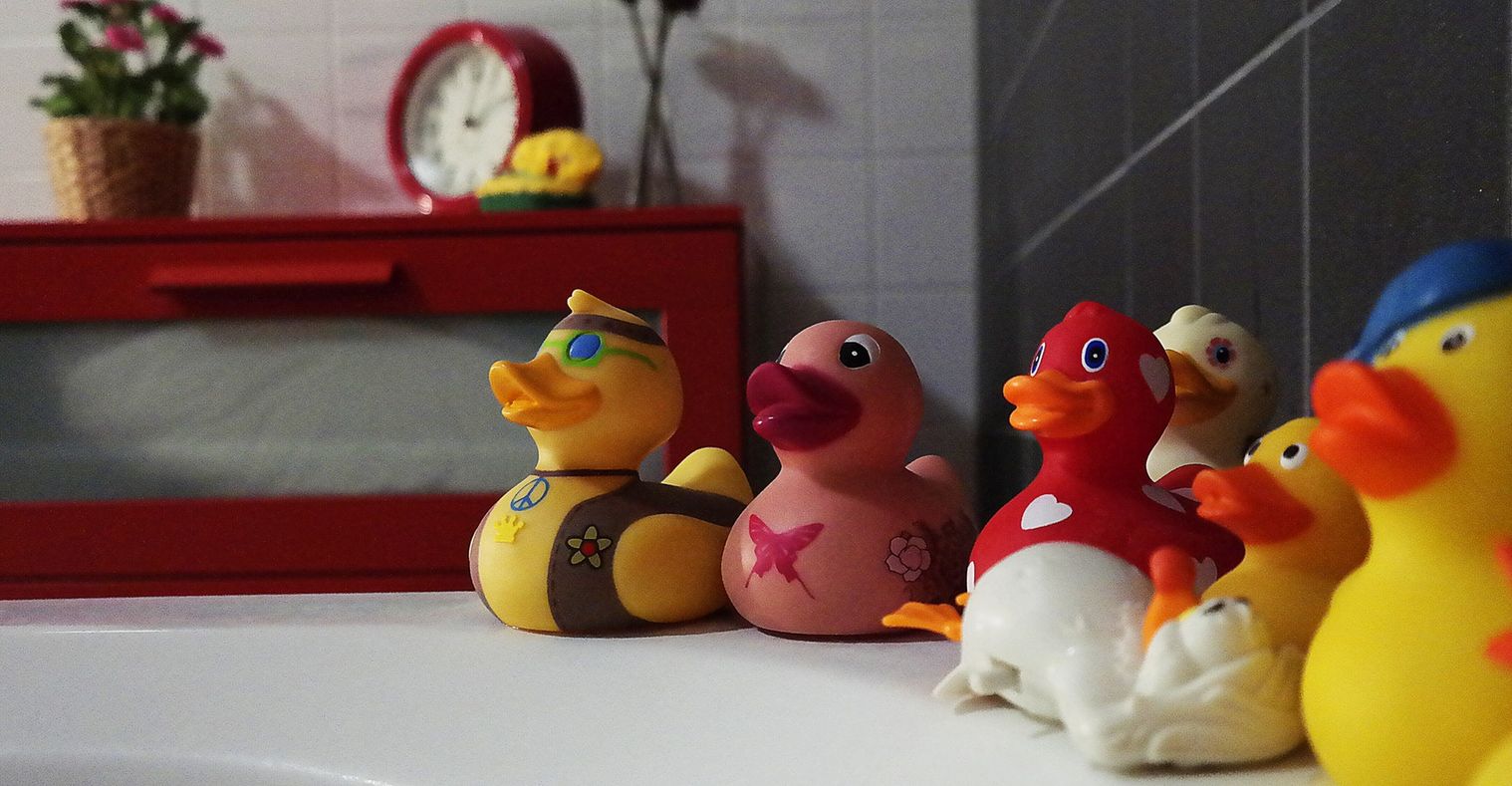These nine bathroom safety tips for babies and toddlers will ensure this oft-used room in your house is free of hazards for your little ones.
1. Make your bathroom anti-slip
If your bath or baby bath doesn’t already have an anti-slip surface, use a non-slip mat to prevent slips and falls. The non-slip mat will also keep your bath and baby in position and reduce the chance of them slipping during bath time.
2. Get organised
Before you start the bath, make sure you’re organised. Have your towel and toiletries ready to go and make sure everything you need is within arm’s length. Check that the water temperature is appropriate before your baby or child gets into the water (see tip #5).
3. Avoid distractions
While it might be cute to take photos of your baby or kids at bath time, it’s not safe to do this yourself. Leave all distractions outside the bathroom, including your phone. If you need adorable pics of bath time, get someone else to take them while you’ve got your hands full.
4. Always watch your child
It should go without saying, but never, ever take your eyes off your child while they’re in the bath. It only takes a second for children to slip underwater or injure themselves and that’s not something any parent should have to go through.
RELEVANT: What you may not know about babyproofing your home
5. Test the water temperature
Every year in Australia and New Zealand, about 3% of children admitted into hospital for burn injuries are the result of them being scalded by hot water. Before you place your baby in the water (or before your children climb into the bath), make sure it’s a safe temperature for them. A thermometer is the most accurate way to test the water, which should be no more than 38°C. A common way to test it without a thermometer is to dip your elbow into the water—if it feels too hot, add some cold water and test it again.
6. Invest in an anti-scald device
An anti-scald device is an automatic temperature control device that ensures any water released is at a safe temperature for users. It ensures you’ll never run a bath or shower that’s too hot. Usually these are installed by a licensed plumber, so contact your local plumber to find out more.
7. Drain the water as soon as bath time is over
Once bath time is done, pull the plug on it—literally. Don’t leave water in a bath that doesn’t need to be there. The sooner you can drain the bath, the better, as it’s a water hazard for babies and small children.
8. Get a toilet lid lock
Another useful item of bathroom safety equipment that’s worth installing is a toilet lid lock, which prevents little fingers from getting caught in between the toilet lid and seat. This also has the added benefit of keeping little people out of the toilet and getting up to mischief.
9. Lock medicines away
You don’t necessarily need to buy or install a medicine cabinet, but you do need to ensure that any medicines are locked away and out of reach of children.
How helpful was this article?
Click on a star to rate it!
0 / 5. 0
Be the first to rate this post!
Dean Williams
Related posts
Subscribe
Receive personalised articles from experts and wellness inspiration weekly!


